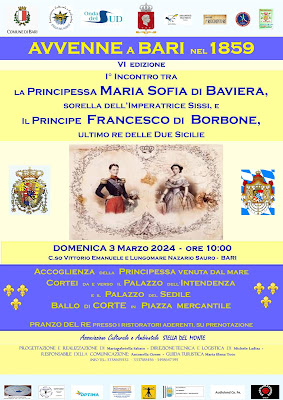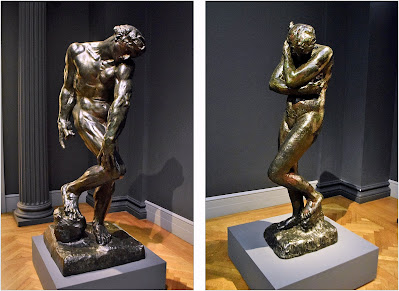Puglia is divided into four major dialect families from north to south- the dauni, apuli, apulo-salentini, and salentini- as well as historic minority language areas where Albanian, Greek and Franco-Provençal dialects are spoken. Francesco Antonio D’Amelio wrote in the Salentino dialect of his native Lecce, which was one of the most important fiefs of the Kingdom of Sicily and was placed directly under the crown in the 15th century, and which continued to flourish for centuries as one of the most important cities in Southern Italy for its commercial and cultural output. During the Two Sicilies the Bourbons made official visits to Lecce beginning with Ferdinand IV. D’Amelio witnessed this latter visit and lived through the upheavals of 1799, the Napoleonic invasion and occupation and the Bourbon restoration and final years of Southern Italian independence.
D’Amelio was born in Lecce 5 June 1775 to Pasquale Fortunato D’Amelio and Maria Maddalena Altamura. He was educated locally and worked in the Registry and Tax office for much of his life. Uninvolved in the upheavals of the era, he dedicated himself to his verse and the love of his region. In 1810 married Elena Licastro. After the insurrection of 1820-21 he was temporarily suspended from duties during investigations and was later reinstated.
In 1832 he published his first collection of verse in Leccese, dedicating the volume to Duke Carlo Ungaro, the general superintendent of the province of Lecce. The first part of the volume includes historical and humoristic poems while the second collects sacred themes and dialogues and monologues inspired by Christmas, New Year’s, and holidays such as carneval.
Among the first section’s poems, the historical themes in Lu bbuccamentu de Nnibale e Scepione, Subbra a Enea quandu scappau de Troja, La morte de Lucrezia rumana, A nn'amicu pe nu caddhru ci n'ia muertu de sùbetu, Lu carniali de lu 1829, ci se llecenzia de Lecce, Buenu aùru de l'annu 1830 a D. Pietro N. N., are considered noteworthy. His Puesei sacre contained in the second part are highly regarded as representing his best work and his sincere feelings, such as the Dialegu subbra a llu Mmamminu tra lu Ronzu e lu Nardu, Lu Nniccu a llu presepiu, Subbra lla nasceta de Gesù Cristu, touching on the Christmas presepio and the birth of Christ.
D’Amelio was named secretary of the local Stewardship Counsel and second in charge of his office. His wife died in 1851 and he retired in 1858 and died on 28 July 1861, barely seven months after the fall of the Kingdom and the expulsion of King Francis II. It is interesting to note that several 19th century publications in the wake of the dangerous shifting political climate of the newly unified Italy appear to attempt to make D’Amelio a worthy figure by playing up his temporary suspension due to his having greeted a group of passing political prisoners, insinuating he was a liberal or insurrectionist, while 20th century publications denigrated him for not being revolutionary or politically engaged at all in the Risorgimento. Without question he had a profound love for his homeland and was a pious man.
Known for his wit and satire, D’Amelio has been compared to the Roman dialect poet Giuseppe Gioacchino Belli, his contemporary, who oddly, like him, also worked in a Registry of Deeds and Taxes office, but across the border in the Papal States. D’Amelio often mused on the passage of time and the ancient beliefs that even years and leap years were inauspicious, while the odd years were good years.
Buenu Auru de l’Annu 1830
A D. Pietru N.N.
Già ncarcatu a na Sciumenta
Ci camina senza ttoppa,
Comu jentu l'annu trenta
Pe le sciade sta caloppa.
Stae staddignu, e bole sbutta
Uarda tutti, e nu saluta:
Mamma mia ce cera brutta!
Lu Signore cu ni juta.
L'annu tundu, l'annu paru
Pietru miu nu n'è felice;
Ma ca è buenu l'annu sparu
Ogne Strolecu lu dice.
Sia com' ole, fazza Diu,
Iddu tuttu face, e space,
Se nu è buenu Pietru miu
Lu suffrimu a santa pace.
Jeu però (largu ogne dannu)
Cu lu core schettu, e puru,
Osce ci ete Capunannu
Tuttu liegru te l'auru.
Best Wishes for the Year 1830
To Don Pietru N.N.
Already straddling a mare
It walks there without a glitch,
Like the wind the year thirty
Through the streets goes galloping.
It remains stable-reared and wants to turn back,
Looks at everyone, and doesn’t greet:
My goodness what an ugly face!
The Lord help us.
The round year, the even year
My Pietru, is not auspicious;
But that the uneven year is good
Every astrologer says.
Be it as He wills, God makes it,
He makes and unmakes everything,
If it is not good my Pietru,
We’ll suffer it in saintly peace.
I however (far from every harm)
With my heart genuine and pure,
Today’s New Year’s
I wish be all merry for you.
Note:
The 1905 Rivista Storica Salentina, Anno II, edited by Pietro Palumbo and published by the Stab. Tipografico Giudignano in Lecce, contains a long article clarifying errors and information regarding D’Amelio’s life and work and previously unpublished notes and remembrances in an effort to bring to light aspects, which in the author’s view, should have been known and appreciated as D’Amelio was not an ancient poet. The piece points out that Michele Lupinacci, who wrote D’Amelio’s frequently cited obituary, was the son of Raffaele Lupinacci, a friend of D’Amelio. Lupinacci recalled that D’Amelio would celebrate Christmas with his family and recited and gave copies of his poems to him and his brother when they were young, and that in Lecce many people recited D’Amelio’s holiday poems for many years. One lost poem Lupinacci transcribed from memory (similar to the published holiday verses) read:
Scurrenu l'ure e bolanu The hours run and fly by
Li giurni e nu li sienti, The days and you don’t hear them,
Li misi e l'anni scurrenu The months and the years run
Chiù pesciu de li ienti. Worse than the winds.
Pare ca propriu portanu They seem to wear just
Comu a l'acieddi l'ale, Like the birds wings,
Ieri foi Santu Stefanu Yesterday was Saint Stephen’s
E moi ntorna è Natale. And now it is Christmas again.
Ma l'anni anu e benenu, But the years come and go,
Nu suntu comu a nui, They’re not like us,
Ca se murimu, cuernate, Who if we die, make horns (God forbid),
Nu nci turnamu chiui. Don’t come back.
Further fruitful modern research will no doubt yield interesting insight into the Lecce of this Two Sicilies period, as the same article speculates that some late 18th century Leccese dialect poems then found in the British Museum in London may have indeed been authored by D’Amelio in his youth. As the Rivista Storica Salentina pointed out over a century ago, claims that not much was known about D’Amelio were often repeated inaccuracies, and that much information was indeed available and he was not the first Leccese or Salentino dialect poet, although his impact has been very large.
Essential Bibliography:
Francesco Antonio D’Amelio, Puesei a Lengua Leccese, de lu Franciscantoni D’Amelio de Lecce dedicate a Soa Ccellenza D. Carlo Ungaro, Duca de Monteiasi, Calieri de l’Ordene Mperiale de Santu Leupordu, Seconda Edizione a cura di Avv. Oronzo D’Amelio, Lecce, Tip. Editrice Salentina, 1868
M. Lupinacci, Cenno necrologico di F. A. D’Amelio, in Il Cittadino Leccese, 7 agosto 1861, pp. 83-84
V. Imbriani, Dell'organismo poetico e della poesia popolare italiana. Sunto delle lezioni dettate ne' mesi di febbraio e marzo 1866 nella R. Univ. Napoletana, Napoli 1866, pp. 50-51 (also in Studi letterari e bizzarrie satiriche, edited by B. Croce, Bari 1907, pp. 68-69)
G. Morosi, Il vocalismo del dialetto leccese, in, Archivio glottologico italiano, IV (1878)
F. Bernardini, Un poeta vernacolo, in Riv. minima di scienze, lettere ed arti, IX (1879)
E. Bicci, F. D’Amelio., in Strenna salentina, Lecce 1881
A. Foscarini, Saggio di un catalogo bibliografico degli scrittori salentini, Lecce 1894
N. Bernardini, F. A. D’Amelio. e i suoi tempi. Note ricordi e documenti inediti, in Rivista storica salentina, II (1905), pp. 131-167
E. Pedio, F. A. D’Amelio. Poeta dialettale di Terra d'Otranto, in Puglia, III (1926)
F. Lala, Profilo delle lettere nel Salento dall'Ottocento ad oggi, in Il Campo, II (1955)
F. Manno, Interpreto D’Amelio., in La Voce del Salento, 1° genn. 1930
N. Vacca, Dameliana, in Rinascenza salentina, IX (1941)
G. Rohlfs, Vocabolario dei dialetti salentini (Terra d’Otranto), Munich, Verlag der Bayerischen Akademie der Wissenschaften, 1956-1961
Four editions of D’Amelio’s Puesei a Lingua Leccese were published in Lecce, the first in 1832 ; the second expanded edition edited by his nephew Oronzo D'Amelio, in 1868 which included additional poems and biographical information; a third also edited by Oronzo D'Amelio appeared in 1882; and the fourth annotated edition by Ersilio Bicci appeared in 1888.
The 1868 edition is available online here










































